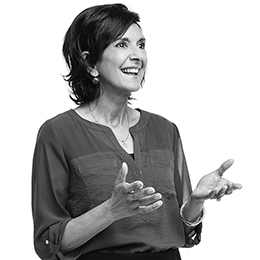Advancing from leader to senior leader can be frustratingly elusive. Many people reach a point in their careers where they see others seamlessly making the jump to top functional roles and wonder what they are doing wrong. While a certain level of self-analysis is beneficial, its escalation to self-doubt is counterproductive.
Sometimes, career advancement is a matter of gaining the right experience and knowledge and, other times, it’s a matter of building skills that can be difficult to define and harder yet to develop, such as executive presence, strategic agility and influencing decisions outside your sphere of authority.

Cách bạn xác định cơ hội thăng tiến là rất quan trọng đối với sự thành công trong vai trò lãnh đạo mới
While a training class will certainly introduce you to some new concepts and techniques, research demonstrates that most skill-building happens at work and that experience and exposure trump formal learning. For instance, the 70:20:10 learning concept is a widely accepted theory that suggests that most (70%) of what employees learn is learned on the job, with an additional 20% of learning gained from relationships and feedback and the remaining 10% achieved through training and coursework. Regardless of the precise formula, the solution begins with taking ownership of your own development and engaging in high-value development activities that will put you on the right path.
1. Ask for feedback
Unsolicited feedback often never arrives, so be proactive and ask what you should be doing -- and not doing -- to make you a more effective leader. It’s up to you to actively solicit input from not only your boss but your peers, direct reports and business partners.
2. Step beyond your role
It is crucial to seek out opportunities beyond your functional area that will enable you to contribute to the broader enterprise and expose you to different leaders to learn new ways of approaching challenges and solving problems. Participating in -- or chairing -- a cross-functional task force or volunteering to lead a special business initiative is also an excellent practice. But, be selective: Identify projects with large-scale implications that will showcase your ability to think broadly and innovatively outside the confines of your current role.
3. Focus on the right things
Consider how your job fits into the broader functional mix and total company objectives, and align your priorities accordingly. While you may excel at many things large and small, it is imperative to focus on the activities that will deliver the greatest returns and demonstrate that you are consistently operating with an enterprise view and strategic understanding of the business.
4. Actively observe
Study how successful senior leaders present and share information. How do they interact and respond? How do they think through challenges and make decisions? How do they engage and inspire their teams? Absorb and emulate those behaviors so that they will be recognized.
5. Communicate your ambitions
A promotion does not always land on your doorstep. From a manager’s point of view, an expression of interest is often the first step in the process toward making the case that you are the right person for a step up.The aforementioned activities do not come as second nature to many of us but, when applied, they will all function together like parts of a machine and help you achieve your goals.
There are times, however, when the only solution is to change jobs. Perhaps you have hit the ceiling due to your company’s size or industry or there are other internal political factors at play. If you’re at a point in your career where more senior opportunities are limited internally and upward mobility is not in your foreseeable future, it may be time to explore your options externally.
How you position yourself for a step up is crucial to your job search success. Since your resume serves as a prospective employer’s first impression of you and reveals how you view your career, you want to be sure that it effectively transmits your fit for a more senior assignment. Simply put, your resume’s content should reflect the job you want, not the job you have. When approaching your resume, highlighting your strategic business contributions in favor of tactical activities and day-to-day responsibilities is a good tonality to achieve. You also want to examine the areas in which you’ve operated in a more senior capacity and had an impact on a broader scale. Areas to consider include:
- Top- and bottom-line revenue impact
- Cross-functional influence
- Team development successes
- Company culture improvements
- Product/service advancements
- Business process transformation
- Business innovation
- New market penetration or expansion
- Enterprise-wide task force leadership
Ultimately, the objective is to convey the achievements that demonstrate your ability to operate, lead and contribute at a more senior level.












